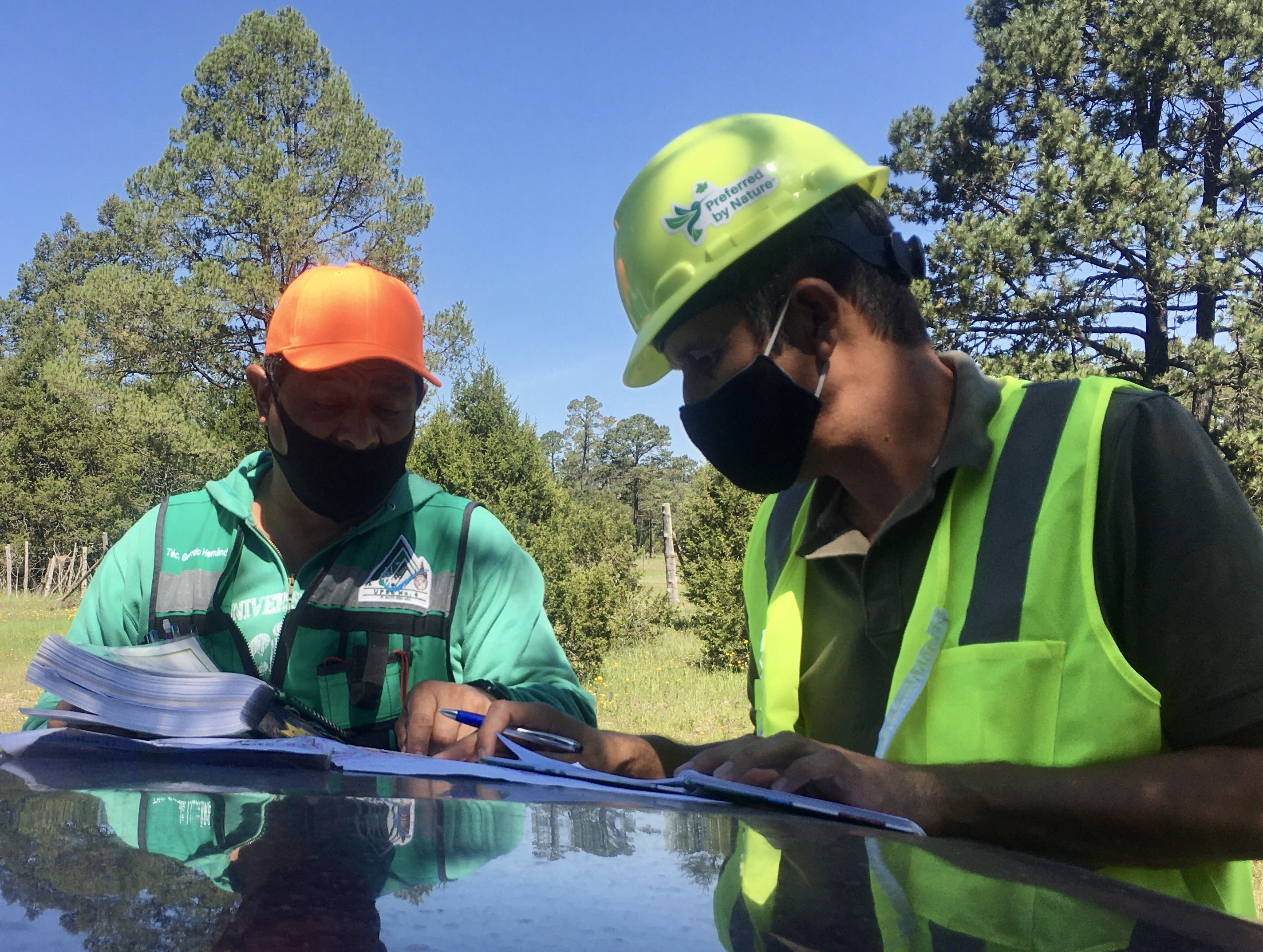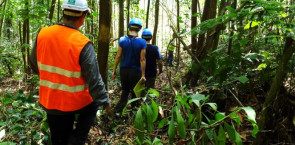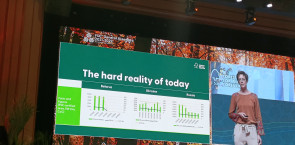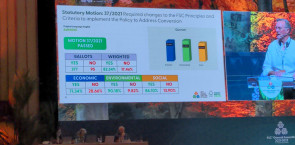
The pandemic has pushed remote auditing under the spotlight but seeing it in practice indicates that it may be here to stay. Speaking as a panelist in one of the Forest Stewardship CouncilTM (FSCTM) General Assembly sessions, our Senior Forestry Programme Manager, Gabe Bolton, shared that remote auditing can significantly improve efficiency and has the potential to reduce audit-related costs when used alongside traditional audit methods.
Travelling had always been part of any forestry auditor’s life. This swiftly changed when Covid became the new reality in 2020. For the first time, the auditing sector started to talk about ‘remote audit’. Remote auditing, also referred to as desk audit, is where the auditor employs technology to remotely audit activities that would typically be audited on-site.
FSC was one of the schemes that quickly adapted to the new situation back in 2020. When the pandemic was of less concern, however, in the FSC General Assembly 2021, the Motion 57 on remote auditing was voted down.
Motion 57/2021 called for FSC to develop and establish a consistent risk-based approach to remote auditing to increase opportunities for conducting remote audits in both Forest Management and Chain of Custody audit cycles beyond the Covid-19 era. It was evident that more fine-tuning was needed for this motion.
With the revision of the Forest Management Evaluations Standard (FSC-STD-20-007) now ongoing, remote auditing is being re-introduced as a supplementary method to the on-site audit. This subject was drilled down further during the 'Remote auditing in forest management evaluations' side session at the FSC General Assembly 2022.
A new form of audit
Remote auditing allows certification bodies to allocate auditor resources more efficiently. In fact, they can spend more time on auditing rather than travelling. As many audit aspects can be scheduled in advance, auditors will be able to conduct more focused on-site audits.
"Over the past two plus years, we have learned that the traditional model of sending an audit team on-site for several days to conduct all the defined audit activities does not need to be the only way to conduct an FSC Forest Management audit," explained Gabe.
He added, "Conducting parts of the audit such as document review, worker and stakeholder interviews, where appropriate, in advance of the on-site part of the audit can result in more efficient and targeted field verification when on-site. This can also mean fewer auditors travelling to the forest so a smaller carbon footprint can be achieved, with potential cost saving."
The revision of the standard would also encourage innovation related to the use of information technology tools and solutions. With remote auditing, we can expect to see more expanded use of technology such as Zoom, 360 cameras and drones to conduct thorough evaluations.
Currently, the FSC Geographic Information System (GIS) portal, a geospatial web app to help auditors perform their duties remotely, is an underused resource. This, however, has the potential to become a more robust and important tool for FSC Forest Management auditors in line with the revision of the standard.
What is the downside?
Providing a comprehensive overview, the side session explored some of the projected disadvantages of remote auditing.
"It can be more difficult to develop a rapport and trust with the auditee and stakeholders via phone or video chat. There is also a greater chance of missing nonverbal cues during interviews and site inspections," shared Gabe.
Aside from these, there could also be a potential for pricing competition leading to the misuse of remote auditing techniques in unsuitable situations.
Gabe explained, "One of the criticisms I have heard is this will lead to a race to the bottom with Certification Bodies cutting costs by not always going onsite to verify conformance when needed. While pricing competition is a reality, the revised standard has checks in place that can be monitored by ASI (Assurance Services International) to ensure credible audits continue to be conducted."
To mitigate these, Certification Bodies will need to know the capabilities of the Certification Holder well and understand the stakeholder context to determine if conducting parts of the audits remotely is even feasible.
"There are certain aspects of conformance that will always need to be verified on-site, such as health and safety issues for workers and the use of chemicals, and there are also some stakeholders that need to be engaged in person for an effective audit process," clarified Gabe.
Going further into the changes in the standard, Gabe shared that this would have an impact on the approach to forest management evaluations.
While Certification Bodies would conduct some document review and stakeholder consultations prior to the onsite audit, the revised standard formalises this as an approach which will allow more precise on-site auditing directed by the work that is done remotely.
“When eligibility criteria are met, the remote part of the audit can identify potential issues that can be followed up on-site to verify conformance. Overall, this will lead to a more efficient allocation of resources during Forest Management audits," said Gabe.
He added that Preferred by Nature is now comparing non-compliances in audits conducted remotely with on-site audits to see if there are differences in the number and type of non-compliances identified.
Featured image courtesy of Jose Galvan / Preferred by Nature






